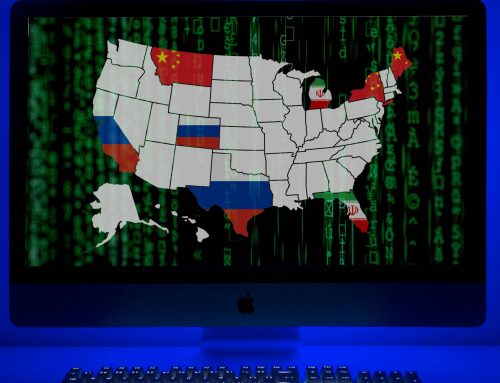Awareness of who owns what is critical to national security, and the U.S. government knows far less than you think. Even after Congress outlaws completely anonymous companies, it will still be difficult for the government to understand patterns of foreign investment, particularly when complex structures are used. Here’s how to track and analyze these flows without disrupting business.
The United States has grown increasingly isolated among major economies in its willingness to allow individuals to form a company anonymously. But this could finally change. Legislation requiring individuals who create a new company to report their identities and ownership stakes to the Treasury Department seems likely to pass in Congress, and soon. Such a measure nearly passed the House Financial Services Committee last year, and Treasury Secretary Steven Mnuchin has been outspoken in his support for it.
Issues of validating and verifying the ownership information submitted to the government will no doubt dog the program for some time, and properly vetting the large volume of submissions will be resource-intensive. Nonetheless, maintaining a centralized register of the owners of U.S. companies and making it accessible to law enforcement and regulators will be a major accomplishment – one that will make it more difficult for illicit actors to transfer funds and launder money through an anonymous company.
However, the demise of truly anonymous companies will mark the beginning, not the end, of the path to financial transparency. Here are some steps that the government can take to begin to get an accurate sense of foreign investment in the United States and better assess where the greatest risks may lie.
Transparency Matters
Undeclared foreign investments allow malign actors to cultivate political influence; gain economic leverage; infiltrate the government procurement process; and obtain access to and influence over strategic sectors. When foreign actors acquire companies that make controlled goods, own sensitive personal data, or produce military technology, there is a tangible threat of sabotage, subterfuge, theft, or surveillance.
The Committee on Foreign Investment in the United States (CFIUS), newly enhanced in 2018, oversees a fairly robust, albeit imperfect, screening process to assess these most acute risks. But CFIUS cannot screen foreign acquisitions of which it is unaware. The government does not have a precise sense of how many assets are owned by foreign investors, let alone which assets or which investors — and ending anonymous companies would not solve the problem. That is both because investors need not purchase U.S. assets using a U.S. company, and because simply reporting the owner of a company provides no information about what assets that company bought.
While the United States should maintain its open investment posture, stronger monitoring of foreign asset purchases is essential. Although pervasive opacity makes it difficult to assess the relative percentage of foreign capital flows that may pose a national security threat or involve illicit activity, there are warning signs. Counterintelligence officials from Boston to Silicon Valley have warned that foreign, particularly Chinese and Russian, investment in the tech sector often has non-commercial motives, including access to data or controlled technology. A pilot Treasury program to track all-cash residential real estate purchases in select cities found that approximately one-third of the transactions involved a party that was separately mentioned in a suspicious activity report filed by a financial institution. And high concentrations of non-resident bank deposits have been correlated with large-scale money laundering at banks in Cyprus, Estonia, Latvia, Malta, and elsewhere.
A financial transparency agenda driven by national security should comprehensively monitor foreign money entering the United States, and it must tackle the four primary ways in which it does so: foreign direct investment, portfolio investment, real estate, and bank deposits.
The Four Pathways to Financial Influence – and How to Increase Transparency Within Them
Foreign Direct Investment
When a foreign investor buys a U.S. company outright, starts a new one, or builds a plant or facility, the transaction is classified as foreign direct investment (FDI). The Commerce Department’s Bureau of Economic Analysis conducts surveys to track this activity and asks the U.S. company being acquired to report the nationality of its beneficial owners, meaning the individuals who own or control the company making the purchase. Commerce estimates the total level of FDI at approximately $13.4 trillion. The surveys are designed with economics, and not national security, in mind, and they do not attempt to ascertain the identities of foreign investors. To remedy this, the United States government should:
Improve Commerce Department surveys of foreign direct investment. Commerce should attempt to collect the names and identities of foreign direct investors at the beneficial owner level as part of its existing surveys. U.S. government agencies should be allowed to use this information for lawful regulatory or investigative proceedings. Commerce reporting could also serve as a baseline against which other reporting could be checked.
Require hedge funds, private equity funds, and venture capital firms to disclose their investors and their positions as soon as possible. In practical terms, relying solely on Commerce Department surveys would be insufficient. For one thing, much foreign direct investment structured through private investment funds is exempt from Commerce surveys. More fundamentally, small and medium-sized businesses may have difficulty carrying out sufficient due diligence to verify that the information they receive about their foreign investors is accurate, and enforcement of penalties for non-compliance would be challenging.
Therefore, the U.S. government’s priority with respect to FDI should be the collection of accurate information from hedge funds, private equity firms, and venture capital firms. They are relatively finite in number, they are sophisticated, and they have compliance capabilities. U.S.-based firms hold positions totaling $13 trillion. It would be straightforward to require fund managers to disclose to the Securities and Exchange Commission (SEC) – which already regulates and examines them – both the identities of their investors and the investment positions they hold. These fund managers should also be subject to anti-money laundering (AML) program requirements, from which they are currently exempt.
In a second stage, collect equivalent information from foreign funds. Collecting equivalent information from foreign funds – including sovereign wealth funds – is a bit more complicated, but the Foreign Account Tax Compliance Act offers two workable models: fund managers could supply the information directly to the U.S. government, or their domestic supervisors could do so for them. The penalty for non-compliance could be a fine, a surcharge, or restrictions or prohibitions on new U.S. investments. The United States would and should be expected to reciprocate.
Portfolio Investment
The Treasury Department estimates foreign portfolio investment – i.e. holdings of publicly traded equity or debt — in the United States at approximately $19.4 trillion. This figure should serve to underscore the scale of this investment, although it is at best a ballpark number, derived from an annual survey of U.S. and foreign financial institutions that Treasury conducts jointly with the New York Federal Reserve.
The survey suffers from “custodial bias,” meaning it often captures the location where U.S. stocks and bonds are legally held; it generally does not identify the securities’ ultimate owners. As a result, financial centers such as the Cayman Islands, Luxembourg, and Switzerland are overrepresented in the survey. That means that assertions as to the amount of U.S. government debt owned by China, for example, are more likely a floor than a ceiling, as these estimates would likely miss U.S. Treasuries held outside of China and not self-reported by Chinese government entities.
The SEC currently has some visibility into the ownership of publicly traded stock. The reporting is fairly comprehensive for the holdings of regulated U.S. institutional investors. It also aims to identify every instance in which an investor takes at least a five percent equity stake, although the enforceability of that provision on foreign investors is questionable. Information about bonds and other debt is even scarcer. To remedy this, the administration should:
Identify the owners of securities such as stocks and bonds. There are two ways to find out who America’s portfolio investors are and what they own. The first is to require custodian institutions that legally hold the securities to obtain this information from their clients, who are typically other custodians or broker-dealers, who would in turn submit additional requests all the way down the chain. Failure to comply would result in the clients’ quick dismissal. An alternate option is to gather more limited information (lightening the burden on U.S. custodians) and exchange it with foreign governments. Eventually, the identity of clients ordering a securities trade should be included in each transaction and made visible to all parties involved, as is the standard practice for bank payments.
Bank Deposits
A high concentration of non-resident deposits (money held in a domestic bank by a foreign person) can signal increased vulnerability to illicit financial activity, as demonstrated by recent events in Cyprus, Latvia, Malta, and elsewhere. Non-resident depositors, in large enough numbers, can both become important funders of a bank’s operations and begin to generate enormous fees, incentivizing greater risk-taking. Like other central banks, the Federal Reserve breaks down the amount of non-resident deposits held by corporates and households in its published statistics. However, the practice is to report the country in which the legal entity customer is registered, rather than the nationality of the beneficial owner. Thus, a Russian national who keeps money in a bank account in Cyprus in the name of a Cypriot company is treated as a domestic, rather than a non-resident, depositor; obfuscation is tempting, and easy. The Federal Reserve should:
Collect and publish accurate information about non-resident deposits based on the nationality of beneficial owners. Doing so would have two important benefits. First, it would help U.S. policymakers and supervisors identify pockets of illicit finance risk building up in the system – in a particular institution or geographic area, for example. Second, it would help drive international standards, compelling other countries to follow suit. The information is readily at hand, as U.S. financial institutions are already required to determine the beneficial ownership of legal entity customers. It is also available to law enforcement upon request under Section 314(a) of the USA PATRIOT Act.
The EU is already moving in this direction but much faster, as member states are scheduled to establish national bank account registers by 2020. The United States should consider adopting the European model down the road, but the most immediate priority is simply measuring the level of foreign money accurately.
Real Estate
Beginning in 2015, investigative journalists began to demonstrate the ubiquity of foreign money pouring into luxury real estate anonymously, much of it allegedly tied to corruption or criminal activity. At the time, the government could not meaningfully estimate the size of the problem. For over two years now, the Treasury Department has run a pilot program to prevent anonymous all-cash purchases of residential real estate in certain markets. Treasury collects the information from title insurance companies under Geographic Targeting Orders, a temporary measure to require businesses to report additional information about certain transactions in a defined geographic area. The program has been a success, uncovering a high percentage of purchases linked to suspicious activity. It is time for Treasury to make it nationwide and permanent.
Make permanent Treasury’s pilot program to track real estate purchases. Treasury possesses the authority to require title insurance companies to establish a program to collect, verify, and report the owners or beneficiaries of entities used to purchase real estate. New legislation is unnecessary, although it could serve to expedite the process. Under this approach, Treasury would abstain from imposing full AML program requirements on realtors at this time, although an expansion of these more burdensome requirements to this much larger population of professionals may be warranted at some future date.
A Cost-Benefit Approach
The disclosure and reporting program outlined here is designed to achieve meaningful financial transparency at a reasonable burden, preserving the United States’ open investment posture while protecting national security. The program would bolster CFIUS screening; support law enforcement and counter-intelligence investigations; and help policymakers identify areas or sectors of interest to foreign investors, which may prompt further study. The program should also aid the government’s understanding of broader financial dynamics and potential threats to macro-economic stability. There is no good reason to invite in unlimited sums of opaque foreign money with no ability to monitor it. The benefits are negligible, and the potential costs enormous.
Recommendations
• FDI: Commerce should enhance its existing surveys to identify foreign ownership of specific U.S. companies at the beneficial ownership level; the SEC should collect information on U.S. private investment funds’ investors and positions
• Portfolio Investment: Treasury and the New York Federal Reserve should improve Treasury International Capital system reporting so that foreign holdings of stocks and bonds are reported by beneficial ownership rather than location of custody
• Real Estate: Treasury should make permanent and nationwide its pilot program requiring title insurance firms to identify and report the owners of entities used to buy residential real estate, and it should consider expanding it to cover commercial property
• Non-Resident Bank Deposits: The Federal Reserve should track and publish accurate statistics on the level of non-resident deposits in the U.S. banking system at the beneficial ownership level





